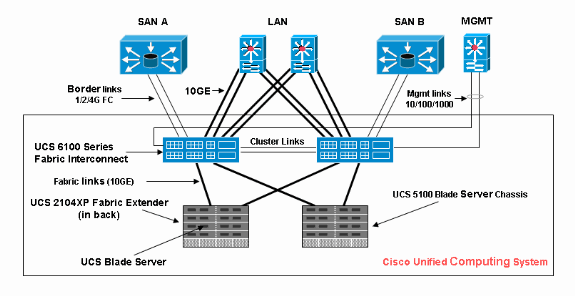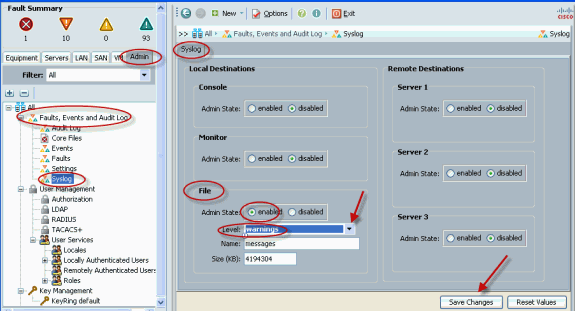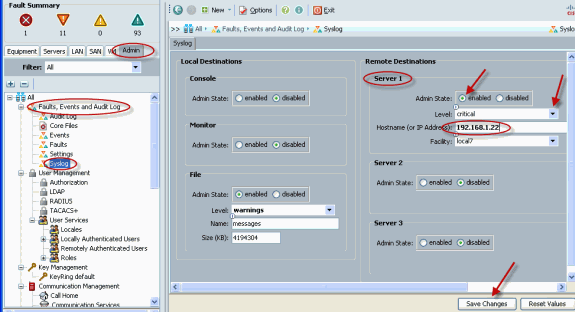Set up Syslog for Cisco UCS
Available Languages
Contents
Introduction
Cisco Unified Computing System (UCS) provides several diagnostic tools to aid in troubleshooting and monitoring the environment. These tools include: command line debug statements, syslog, and SNMP (Call home is another diagnostic/reporting tool). Syslog is the mechanism for processes and scripts to write log entries. The callers can fully specify all of the log entries' characteristics.
A syslog daemon in the system captures logs and saves them in a rotating buffer. These logs can be viewed internally or exported to syslog collectors. Multiple syslog collectors can be specified through configuration.
Prerequisites
Requirements
Cisco recommends that you:
-
Have a working knowledge of Cisco UCS Server Blade software and hardware.
-
Be familiar with the UCS Manager application.
-
Understand the impact and implications of the different commands described in this document.
-
Be familiar with the UCS components and topology. Refer to the diagram below for a typical solution.
Components Used
The information in this document is based on Cisco UCS System.
Conventions
Refer to the Cisco Technical Tips Conventions for more information on document conventions.
Configure
The Cisco UCS Manager starts the syslog daemon and makes certain that it is active in both UCS fabric interconnects. Logs generated by the processes in the NXOS and UCS Manager are exported to the same configured external collectors.
All UCS Manager events are stored in the same fabric they were generated. As expected the passive fabric interconnect will generate less log entires than the active, but some events are still expected. In order to ease the parsing of the logs, all entries by the UCS Manager include the UCS hostname while the NXOS entries include the fabric hostname.
These are a few examples of situations that will generate a syslog entry:
-
DME lifecycle events
-
Faults
-
Ad-hoc messages
-
Events relayed by the BMC and CMC processes
Network Diagram
This is a typical topology used with Cisco UCS:

Steps to Configure Syslog to a Local File
This is the procedure:
-
Log in to Cisco UCS Manager.
-
In the navigation pane, choose the Admin tab.
-
Expand Faults, Events and Audit Log, then choose Syslog.
-
In the work pane to the right, under File, choose enabled for the Admin State.
-
Choose the alarm level from the drop down menu.
-
Click Save Changes.

Steps to Configure Syslog to a Remote Syslog Server
For this configuration procedure, it is assumed that a syslog server was configured and is operating in the network.
-
Log in to Cisco UCS Manager.
-
In the navigation pane, select the Admin tab.
-
Expand Faults, Events and Audit Log, then choose the Syslog option.
-
In the work pane to the right, enable Remote Server #, enter IP address of syslog server, select appropriate Levels and Facility.
-
Click Save Changes.

Verify
You should begin to see events logged on to your syslog server and local files on Cisco UCS.
Troubleshoot
There is currently no specific troubleshooting information available for this configuration.
Related Information
Revision History
| Revision | Publish Date | Comments |
|---|---|---|
1.0 |
27-Apr-2010 |
Initial Release |
Contact Cisco
- Open a Support Case

- (Requires a Cisco Service Contract)


 Feedback
Feedback